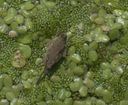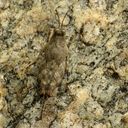Paratettix
Paratettix
Classification
- Phylum: Arthropoda
- Subphylum: Hexapoda
- Class: Insecta
- Order: Orthoptera
- Suborder: Caelifera
- Family: Tetrigidae
- Subfamily: Tetriginae
- Genus: Paratettix
Pronunciation
How to pronounce Paratettix: //ˌpærəˈtɛtɪks//
These audio files are automatically generated. While they are not always 100% accurate, they are a good starting point.
Images






Summary
Paratettix is a genus of small ground-hoppers known as pygmy grasshoppers, with a wide distribution and diverse species. They are important in their ecosystems as herbivores and prey for numerous animals.
Physical Characteristics
Paratettix species are small, often less than 1 inch in length, with a characteristic flattened body suited for a ground-dwelling lifestyle.
Identification Tips
Look for their small size and flattened bodies; they can often be identified by their jumping behavior and the habitats they are found in, typically in grass or shrubland.
Habitat
Ground-dwelling habitats, commonly found in grasslands, fields, and scrublands worldwide.
Distribution
More than 60 species worldwide, with about 8 species identified in specific local areas.
Diet
Herbivorous, primarily feeding on grasses and other vegetation.
Life Cycle
Paratettix has a simple life cycle typical of orthopterans, consisting of egg, nymph, and adult stages.
Reproduction
Paratettix species reproduce sexually, and females typically lay eggs in the soil or in plant material.
Predators
Common predators include birds, spiders, and other predatory insects.
Ecosystem Role
As herbivores, they play a significant role in the food web by feeding on plants and serving as prey for various predators.
Collecting Methods
- Hand netting
- Pitfall traps
- Sweep netting
Preservation Methods
- Ethanol preservation
- Pinning with entomological pins
Similar Taxa
Tags
- Orthoptera
- Ground-hoppers
- Pygmy grasshoppers
- Insecta